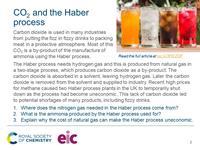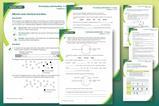What’s carbon dioxide but a second-hand by-product? Well, it’s essential to food and fizzy drink production for starters
Shortage is a word we’ve been hearing all too often recently. The media is abuzz with a lack of petrol, frozen foods, meat, fizzy drinks and, to a lesser extent, carbon dioxide. And much of this comes back to chemistry.
The shortages of meat, frozen food and fizzy drinks are in fact consequences of a lack of carbon dioxide. CO2 puts the fizz into fizzy drinks and provides a protective atmosphere for packing meat to stop it going off. Solid carbon dioxide is used in frozen food production and gaseous carbon dioxide is used to stun animals prior to slaughter.
In the UK most of the carbon dioxide used in industry is a by-product from the manufacture of ammonia using the Haber process. Ammonia production needs hydrogen, which is formed from natural gas (methane) in a two-stage process. In the first stage, methane reacts with steam to produce carbon monoxide, which is then converted to carbon dioxide in the second stage. The carbon dioxide produced is removed by solvent extraction and supplied to industry.
Put this in context
Add context and highlight diverse careers with our short career videos showing how chemistry is making a difference and let your learners be inspired by chemists like Claire, a flavourist and innovation director.
However, only a small amount of the carbon dioxide produced is collected for distribution. The rest is released to the atmosphere, meaning the Haber process has a massive carbon footprint, contributing around 1% of annual carbon emissions worldwide.
Recent very high prices for methane meant two Haber process plants in the UK temporarily shut down as the process had become uneconomic. This led to a sudden lack of carbon dioxide, resulting in those shortages of fizzy drinks, meat and frozen foods. The UK government stepped in and paid the company to restart one of the plants, leading to an unusual situation where the waste product is more important than the main product.
For more information, read Chemistry World’s explainer.
Downloads
EiC starter slide CO2 shortage
Handout | PDF, Size 0.25 mbEiC starter slide CO2 shortage
Editable handout | PowerPoint, Size 0.95 mb















No comments yet